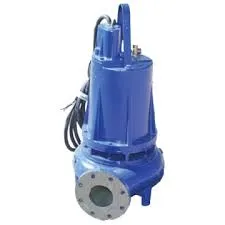English
- Afrikaans
- Albanian
- Amharic
- Arabic
- Armenian
- Azerbaijani
- Basque
- Belarusian
- Bengali
- Bosnian
- Bulgarian
- Catalan
- Cebuano
- Corsican
- Croatian
- Czech
- Danish
- Dutch
- English
- Esperanto
- Estonian
- Finnish
- French
- Frisian
- Galician
- Georgian
- German
- Greek
- Gujarati
- Haitian Creole
- hausa
- hawaiian
- Hebrew
- Hindi
- Miao
- Hungarian
- Icelandic
- igbo
- Indonesian
- irish
- Italian
- Japanese
- Javanese
- Kannada
- kazakh
- Khmer
- Rwandese
- Korean
- Kurdish
- Kyrgyz
- Lao
- Latin
- Latvian
- Lithuanian
- Luxembourgish
- Macedonian
- Malgashi
- Malay
- Malayalam
- Maltese
- Maori
- Marathi
- Mongolian
- Myanmar
- Nepali
- Norwegian
- Norwegian
- Occitan
- Pashto
- Persian
- Polish
- Portuguese
- Punjabi
- Romanian
- Russian
- Samoan
- Scottish Gaelic
- Serbian
- Sesotho
- Shona
- Sindhi
- Sinhala
- Slovak
- Slovenian
- Somali
- Spanish
- Sundanese
- Swahili
- Swedish
- Tagalog
- Tajik
- Tamil
- Tatar
- Telugu
- Thai
- Turkish
- Turkmen
- Ukrainian
- Urdu
- Uighur
- Uzbek
- Vietnamese
- Welsh
- Bantu
- Yiddish
- Yoruba
- Zulu
Telephone: +86 13120555503
Email: frank@cypump.com
Nov . 08, 2024 01:05 Back to list
Understanding the Operation and Applications of Mixed Flow Centrifugal Pumps
Understanding Mixed Flow Centrifugal Pumps Principles and Applications
Mixed flow centrifugal pumps are a critical component in various industrial applications, combining characteristics of both axial and radial flow pumps. These pumps have gained significant popularity due to their ability to efficiently handle fluids at moderate to high flow rates while maintaining reasonable pressure. This article delves into the fundamentals of mixed flow pumps, their working principles, types, advantages, and common applications.
Working Principles
Mixed flow pumps operate on the principle of imparting kinetic energy to the fluid through a rotating impeller, similar to other types of centrifugal pumps. However, what sets mixed flow pumps apart is the unique design of their impellers. Typically, these impellers feature angled blades that allow for fluid movement in both radial and axial directions. As a result, the fluid experiences a combination of centrifugal force and an axial lift, which enables it to exit the pump at a higher velocity.
When fluid enters the pump, it is drawn into the eye of the impeller. As the impeller rotates, the blades accelerate the fluid, converting mechanical energy into kinetic energy. The mixed flow design facilitates a smooth transition of the fluid to the discharge pipe, where it is directed toward the intended destination.
Types of Mixed Flow Pumps
Mixed flow pumps can be categorized into two primary types vertical and horizontal. Vertical mixed flow pumps are typically submerged and are often used for applications such as drainage and irrigation. These pumps are designed to operate in a vertical position, which allows for efficient fluid movement in confined spaces.
Horizontal mixed flow pumps, on the other hand, are commonly used in various industrial processes, including water supply, sewage treatment, and chemical transport. These pumps feature a horizontal orientation and can be easily maintained due to their accessible design.
mixed flow centrifugal pump

Advantages of Mixed Flow Pumps
One of the key advantages of mixed flow centrifugal pumps is their ability to handle a wide range of flow rates and pressures. They are particularly effective in applications where the desired flow rate is high, but the required head is moderate. Furthermore, mixed flow pumps can tolerate variations in fluid density and viscosity, making them versatile for different mediums.
Another significant benefit is their relatively simple design and construction. Compared to other types of pumps, mixed flow pumps have fewer components, resulting in reduced maintenance costs and operational downtime. Their robustness ensures reliable performance, contributing to their widespread use in critical applications.
Applications
Mixed flow centrifugal pumps are utilized across various sectors due to their efficiency and versatility. In municipal water supply systems, these pumps are employed to transport clean water from reservoirs to treatment plants and distribution networks. In agriculture, they play a vital role in irrigation systems, ensuring crops receive adequate water supply.
Moreover, mixed flow pumps also find applications in wastewater management, helping move water and sewage through treatment processes. In industrial settings, they are used for chemical processing, cooling water systems, and fire protection systems due to their reliability under challenging conditions.
Conclusion
In conclusion, mixed flow centrifugal pumps represent an essential technology in fluid management and transfer systems. Their unique design allows them to achieve high flow rates while maintaining reasonable pressure levels, making them suitable for a wide range of applications. Understanding their principles of operation and advantages is crucial for engineers and operators who seek to optimize performance and ensure efficient fluid handling in various industries. As technological advancements continue, mixed flow pumps are expected to evolve further, continuing to play a pivotal role in fluid dynamics.
-
ISG Series Vertical Pipeline Pump - Chi Yuan Pumps Co., LTD.|Advanced Hydraulic Design&Energy-Efficient Solutions
NewsJul.30,2025
-
ISG Series Vertical Pipeline Pump - Chi Yuan Pumps Co., LTD.
NewsJul.30,2025
-
ISG Series Vertical Pipeline Pump - Chi Yuan Pumps Co., LTD.|energy-efficient fluid handling&industrial durability
NewsJul.30,2025
-
ISG Series Vertical Pipeline Pump - Chi Yuan Pumps | Advanced Engineering&Industrial Efficiency
NewsJul.30,2025
-
ISG Series Pipeline Pump - Chi Yuan Pumps | High Efficiency, Energy Saving
NewsJul.30,2025
-
ISG Series Vertical Pipeline Pump-Chi Yuan Pumps|High Efficiency&Reliable Performance
NewsJul.29,2025










